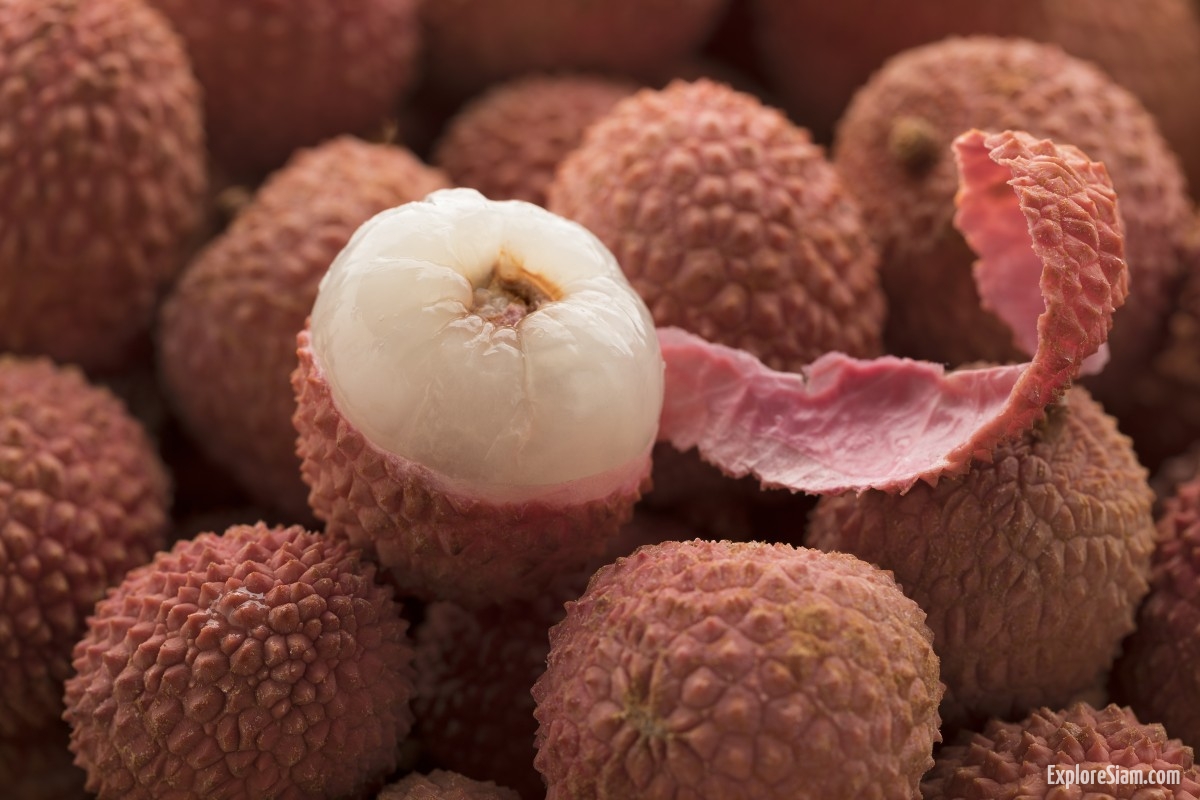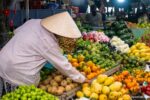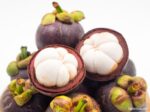In the vibrant landscapes of Southeast Asia, the lychee fruit emerges as a symbol of exotic sweetness and cultural richness. Known scientifically as Litchi chinensis, this small, round fruit with its rough, red skin hides a translucent, juicy interior that has captivated taste buds across the region for centuries. Originating from southern China, lychee has made its way to various parts of Southeast Asia, becoming an integral part of the region’s culinary and cultural fabric. As it spreads through countries like Thailand, Vietnam, Malaysia, and the Philippines, lychee brings with it a tapestry of traditions, flavors, and health benefits that resonate with the tropical essence of this diverse region.
A Historical Delight in Southeast Asia
The lychee’s journey to Southeast Asia is a tale of trade and migration. Ancient Chinese explorers and traders brought the fruit to neighboring lands, where it quickly took root in the fertile soils and warm climates. Historical records suggest that lychee was cherished by royalty and commoners alike, becoming a staple in the region’s agricultural and culinary practices. In Thailand, the lychee is known as “linchee” and has been grown for centuries, particularly in the northern regions where the climate is ideal for its cultivation. Similarly, in Vietnam, lychee has a long history, with the fruit being a beloved part of local festivals and celebrations.
Cultivation and Harvest in Southeast Asia
Lychee trees thrive in the tropical climates of Southeast Asia, flourishing in regions with warm, humid summers and mild winters. The fruit grows in clusters on evergreen trees that can reach impressive heights. Harvesting lychee is a meticulous process, typically taking place in the late spring and early summer. Farmers in Southeast Asia pick the fruit at peak ripeness to ensure its signature sweetness and juiciness. The delicate handling of the fruit is crucial, as its fragile skin can easily bruise, affecting its marketability. In countries like Thailand and Vietnam, lychee farming is often a family affair, with generations working together to cultivate and harvest this prized fruit.

The Taste and Texture of Lychee
Beneath its rough, reddish-pink skin lies the true treasure of the lychee: its succulent, pearly-white flesh. The texture is uniquely firm yet tender, offering a burst of juice with every bite. The flavor profile of lychee is complex, often described as a blend of sweet and tart with floral undertones. Its refreshing taste makes it a popular choice for both eating fresh and incorporating into various culinary creations. In Southeast Asia, the lychee’s natural sweetness and aromatic flavor are celebrated in a multitude of dishes, from traditional desserts to modern fusion cuisine.
Culinary Uses in Southeast Asia
Lychee’s versatility extends beyond its role as a fresh fruit snack. In Southeast Asian cuisine, it is celebrated for its ability to enhance both sweet and savory dishes. In Thailand, lychee is often used in refreshing salads, combined with herbs and spices to create a harmonious blend of flavors. In Vietnam, lychee is a popular ingredient in chè, a traditional sweet soup made with coconut milk and tapioca pearls. The fruit’s subtle sweetness also complements spicy and savory dishes, often featured in stir-fries and seafood recipes. In Malaysia and the Philippines, lychee is commonly used in beverages, providing a tropical twist to cocktails, teas, and smoothies. Lychee martinis and lychee iced teas are popular choices in upscale bars and local cafes alike.
Health Benefits of Lychee
Lychee is not just a treat for the taste buds but also a powerhouse of nutrients. Rich in vitamin C, it supports immune function and skin health. The fruit also contains a variety of antioxidants, which help combat oxidative stress and inflammation. Additionally, lychee provides essential minerals such as potassium and magnesium, contributing to cardiovascular health and muscle function. Its natural sugars offer a quick energy boost, making it a great snack for active individuals. Recent studies have also highlighted lychee’s potential in supporting weight management and promoting healthy digestion, thanks to its dietary fiber content. The presence of polyphenols in lychee has been linked to improved heart health and reduced risk of chronic diseases, making it a valuable addition to a balanced diet.
Lychee in Southeast Asian Culture
The global journey of lychee has seen it become a cherished fruit in many cultures, but its significance is particularly profound in Southeast Asia. In Thailand, lychee symbolizes romance and love, often gifted during festive occasions. In Vietnam, lychee is celebrated in summer festivals, marking the arrival of the hot season. In the Philippines and Malaysia, lychee has become a trendy ingredient in gourmet kitchens and upscale bars, appreciated for its exotic flair. The fruit’s cultural significance extends to various Southeast Asian countries, where it is a staple in local markets and an integral part of traditional dishes. The lychee’s ability to bridge cultural divides and bring people together through its unique flavor is a testament to its universal appeal.
Sustainable Practices in Southeast Asia
As demand for lychee grows, so does the importance of sustainable farming practices. Efforts are being made across Southeast Asia to ensure that lychee cultivation does not adversely impact the environment. Farmers are adopting methods such as organic farming, integrated pest management, and water conservation to protect the delicate ecosystems where lychee trees thrive. These practices not only safeguard the environment but also ensure the production of high-quality, flavorful lychee for future generations. In regions like Thailand and Vietnam, sustainable lychee farming initiatives are gaining momentum, with farmers receiving training and support to implement eco-friendly practices. By prioritizing sustainability, the lychee industry aims to balance the growing demand for this delicious fruit with the need to preserve natural resources and biodiversity.
Lychee Festivals and Celebrations in Southeast Asia
In many parts of Southeast Asia, lychee is celebrated with festivals and events that highlight its cultural and economic importance. In Thailand, the Lychee Festival in Chiang Mai attracts visitors from around the globe, offering a chance to taste the freshest lychees and participate in traditional performances and activities. In Vietnam, the Luc Ngan Lychee Festival showcases the region’s rich lychee heritage, with farmers and artisans coming together to celebrate the fruit’s harvest. These festivals not only promote the lychee but also foster a sense of community and pride among local residents, showcasing the fruit’s significance beyond its culinary uses. These celebrations highlight the lychee’s role in regional identity and its contribution to local economies.
Challenges and Innovations in Lychee Farming in Southeast Asia
Despite its popularity, lychee farming in Southeast Asia faces several challenges, including pest infestations, climate change, and market fluctuations. However, innovations in agricultural technology and research are helping farmers overcome these obstacles. Advances in pest management, improved irrigation techniques, and the development of disease-resistant lychee varieties are making it easier for farmers to cultivate high-quality lychees. Additionally, collaborations between researchers, farmers, and governments are driving efforts to enhance lychee production and ensure the fruit’s continued success in global markets. These initiatives are crucial in maintaining the sustainability and profitability of lychee farming in the region.
Lychee, with its rich history, delightful taste, and numerous health benefits, truly stands out as nature’s juicy gem. Whether enjoyed fresh, incorporated into a dish, or sipped in a drink, lychee offers a unique experience that transcends cultural and geographical boundaries. Its journey from ancient China to global prominence is a testament to its enduring appeal. As we savor the sweet, floral notes of lychee, we celebrate not just a fruit but a piece of history, a symbol of culture, and a beacon of sustainability. Through continued efforts in sustainable farming and innovation, the lychee industry in Southeast Asia is poised to flourish, ensuring that this beloved fruit remains a cherished delicacy for generations to come. The lychee’s ability to bring people together and its contribution to cultural heritage and local economies highlight its significance beyond mere nutrition, making it a true gem of nature.





